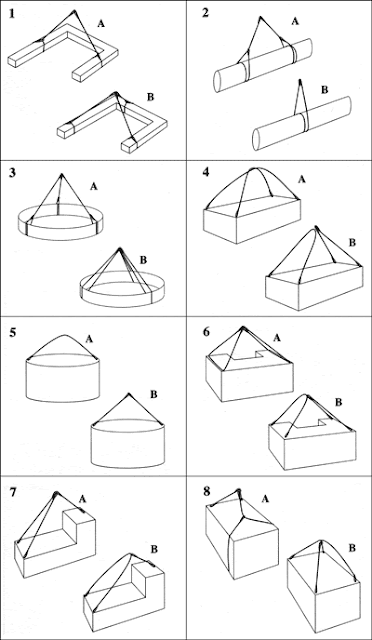Proper Rigging Safety Techniques...
There are significant safety issues to be considered, both for the operators of the diverse "lifting" devices, and for workers in proximity to them. To a crane operator, few experiences may be as frightening as when a crane becomes unbalanced while a load is being lifted or when the crane collapses under the weight of an excessive load.
-
Check limit switches before rigging the load
-
Make sure the load does not exceed rated capacity.
-
Know the center of gravity of the load.
-
Attach load above the center of gravity for stability.
-
Select hitch that will control the load.
-
Know the rated capacities of rigging and slinging
-
Inspect all rigging before use
-
Protect the sling from sharp corners.
-
Allow for increased tension due to sling angle.
-
Equalize loading on multiple leg slings
-
Allow for load reductions when using choker hitches
-
Attach tag line prior to lift.
-
Keep personnel clear of lift area.
-
Wear hard hats when making overhead lifts.
-
Lift load a few inches and verify rigging.
-
Check for any loose items.
-
Know limitations of hoisting device.
-
Start and stop SLOWLY! Watch for obstructions (not only hook and load but outboard end of the bridge).
-
Check pathway is clear before making a lift (use a spotter for blind spots).
-
Verify hook completely closes.
-
Use appropriate hand signals.
-
Maintain load control at all times.
-
Report suspected drum wrappings immediately (if drum has fewer 2.5 wraps remaining).
-
Never leave load unattended.
Selection of the sling is only the first step in the rigging process. Hoists are often used when materials are too heavy or bulky to be safely moved manually. Because hoists rely upon slings to hold their suspended loads, slings are the most commonly used materials-handling apparatus. In part because of the complex nature of the seemingly simple task of lifting an object, an effective program is necessary to lift and move heavy loads safely.
Workers involved in hoisting and rigging operations should receive training in the following:
-
Sling and hitch types
-
Sling capacity determination
-
Equipment inspection, care, and maintenance
-
Load weight and center of gravity determination
-
Safe lifting techniques
The crane regulations cover a number of areas, including:
- Ground conditions.
- Assembly and dis-assembly.
- Work around power lines
- And inspections.
- Signaling.
- Fall protection.
- Work area control.
- Operator certification.
- Qualifications for "signal persons" and maintenance personnel.
- Training.
Before a crane is positioned or assembled, it must be verified that the "ground conditions" are firm, drained and graded so that the crane can set up safely.
Crane assembly, disassembly and set-up must be overseen by personnel who are "competent" and "qualified". There are new restrictions as to how far a crane must be from power lines when it is being assembled, operating or traveling.
Generally it must be at least 20 feet away at all times. But this can vary depending on the amount of current going through the lines). By November 10, 2014 all crane operators must be "certified" by either:
- An accredited testing organization.
- A licensed government agency.
- Or a qualified employer program.
- A "third party qualified evaluator".
- Or their employer’s own "qualified evaluator".







No comments:
Post a Comment
Note: only a member of this blog may post a comment.